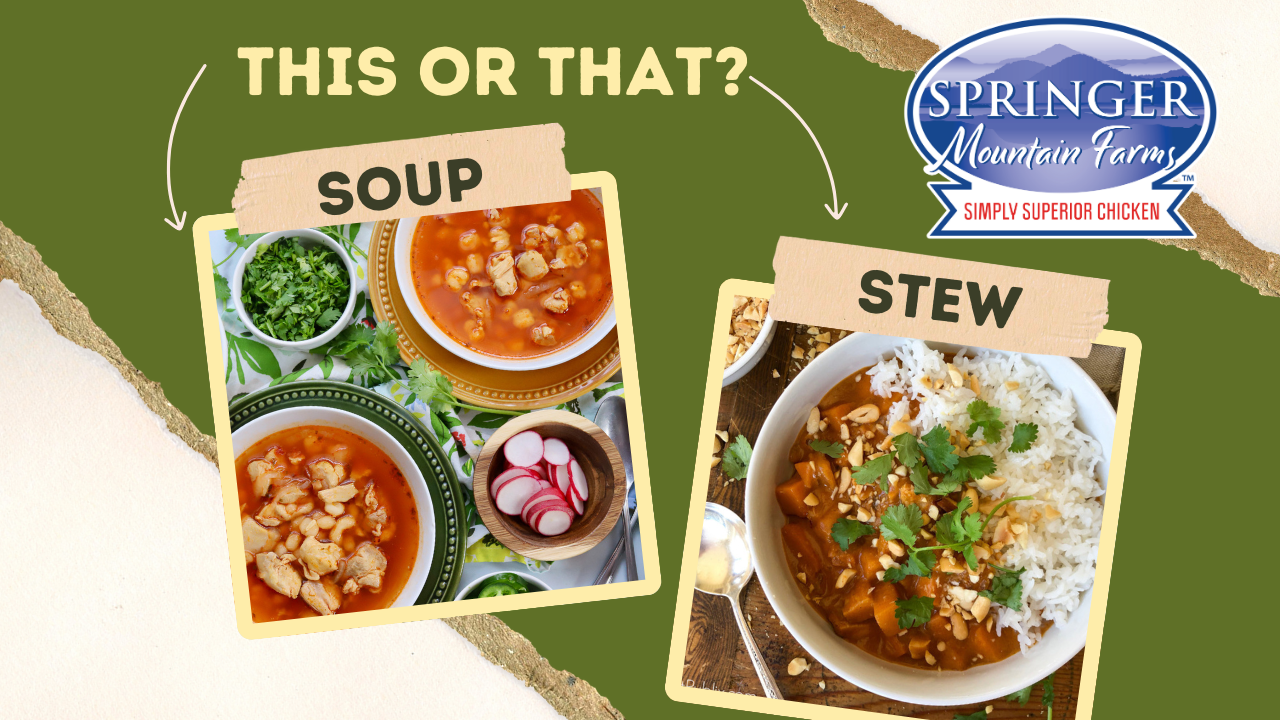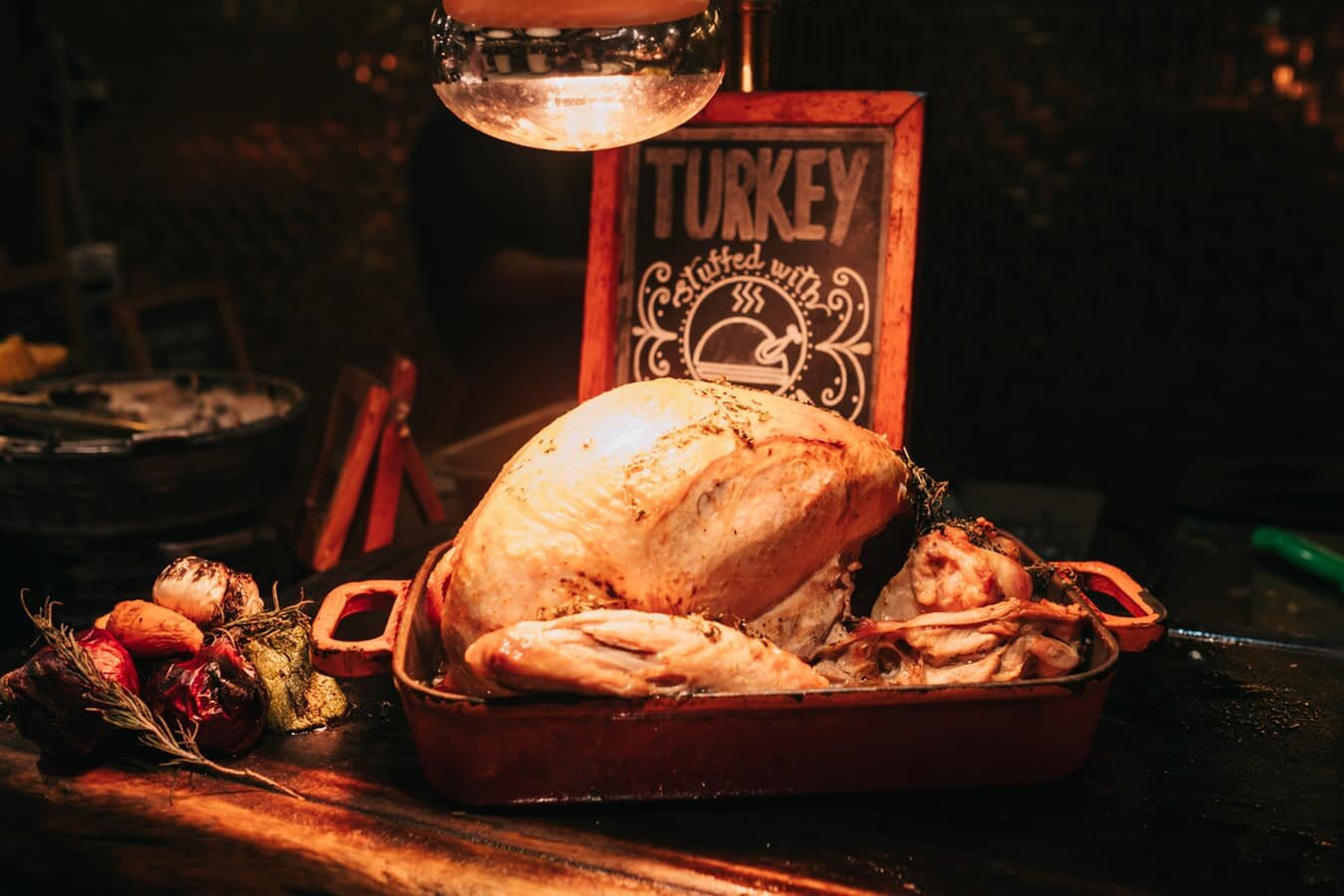It’s that time of the year again! As cold weather rolls in, it's the perfect excuse to pull out your favorite comfort food recipes and put your Dutch oven to work. Whether you're feeding a crowd or meal-prepping for the week, soups and stews made with Springer Mountain Farms Chicken are hearty, nourishing, and easy to freeze.
But what exactly is the difference between soup and stew?
And more importantly—which one do you prefer?
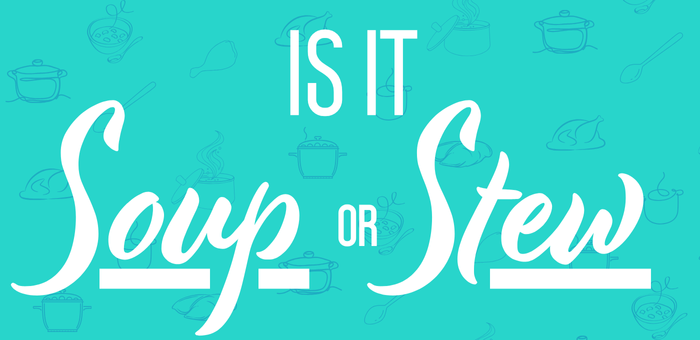
What’s the Difference Between Soup and Stew?
Soup: Light, Brothy, and Quick to Cook
According to Dictionary.com, soups are dishes that are primarily liquid-based. Ingredients are typically fully submerged in a broth, stock, or pureed base. From the classic chicken noodle soup to creamy tomato or hearty potato cheddar, soups come in many forms—brothy, pureed, or creamy.
Soups are usually quick to cook, making them perfect for weeknights. One tip: chop all ingredients small enough to fit easily on a spoon.
Try These Chicken Soup Recipes Using Springer Mountain Farms:
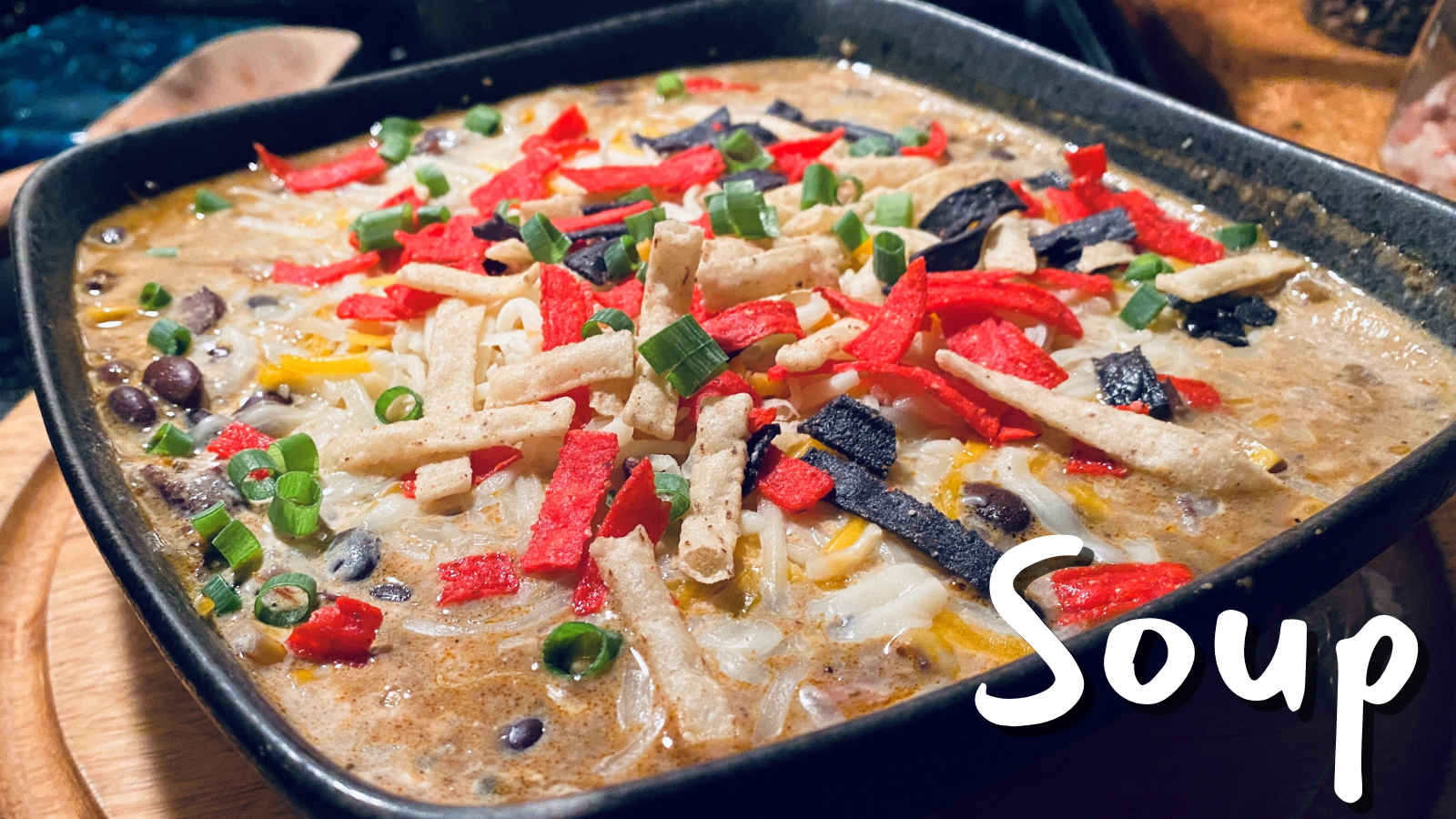
Chicken Tortilla Soup (picturedmade with Boneless Skinless Chicken Thighs
Greek Lemon Chicken Soup with Feta - featuring Boneless Skinless Chicken Breasts
Instant Pot Chicken Noodle Soup - using Boneless Skinless Chicken Breasts
Chicken Broth - simmered with Backs, Necks or Gizzards from a Whole Chicken
Stew: Thick, Chunky, and Rich in Flavor
Unlike soup, stews are thicker with heartier ingredients and just enough liquid to cover them. Stews simmer longer, allowing flavors to meld and making them ideal for tougher chicken cuts that benefit from slow cooking.
Many stews include thickeners like flour or cornstarch and are served over rice, polenta, or mashed potatoes for a filling, satisfying meal.
Top Chicken Cuts for Stew Recipes:
- Thighs – rich and flavorful
- Split Breasts – great for bone-in braising
- Chicken Burgers or Ground Chicken – perfect for chilis and savory stews
- Gizzards, Necks, and Cupped Liver – add deep flavor in traditional dishes
Delicious Chicken Stews with Springer Mountain Farms
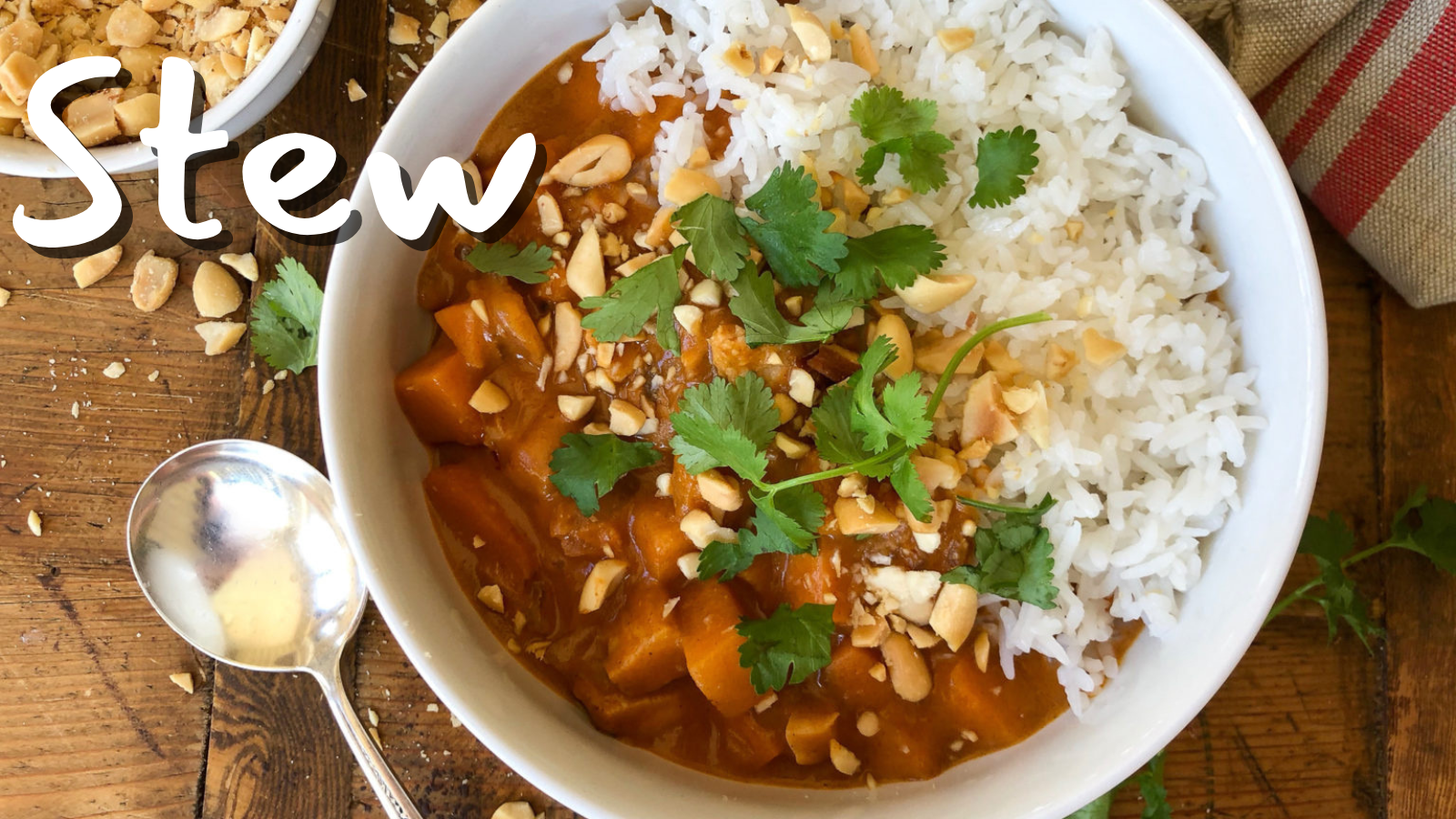
Easy African Peanut Stew (pictured) made with Fully Cooked Grilled Chicken Breast Strips
Instant Pot Coq au Vin - featuring Boneless Skinless Chicken Thighs
Stout Braised Chicken Thighs – slow-cooked for comfort
Chicken and Turkey Jalapeno Chili – spicy and protein-packed
Pro Tip: Let your stew “rest” for 20–30 minutes after cooking. This helps the chicken reabsorb moisture and stay tender.
Soup or Stew? You Can’t Go Wrong with Springer Mountain Farms Chicken
Whether you're on Team Soup or Team Stew, Springer Mountain Farms has you covered with a variety of high-quality chicken products—from Boneless Skinless Breast Strips and Gluten-Free Wings to Whole Roasting Chickens and Fully Cooked Chicken Strips.
Ready to cozy up with a bowl?
